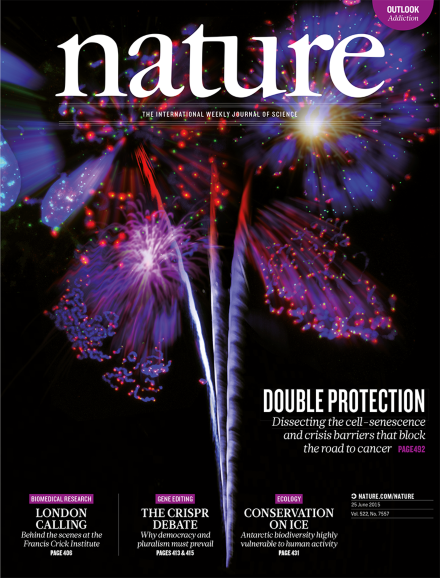Volume 522 Issue 7557, 25 June 2015
Editorial
World View
Research Highlights
Social Selection
Seven Days
News
Correction
News Feature
Comment
-
CRISPR: Science can't solve it
Special:
Books & Arts
Correspondence
Obituary
-
John Forbes Nash (1928–2015)
Special:

